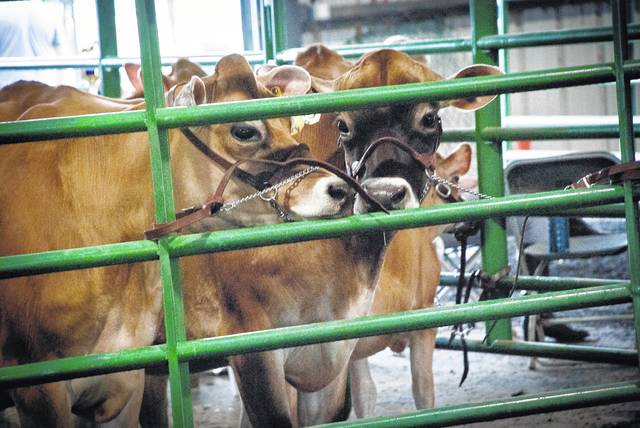
Delaware County’s five-year, 3 percent bed tax has collected $2.9 million in revenues as of April 16, according to Deputy County Administrator Seiji Kelli.
Approved by voters in the March 2016 primary election, the tax began being imposed throughout the county, regardless of municipal boundaries, on May 6, 2016, on all hotel and lodging businesses.
The lodging tax has far exceeded original revenue estimates of $200,000 annually that was projected in a pamphlet from “Friends of Your Delaware County Fair,” which was used to educate voters.
State Rep. Andrew Brenner, R-Powell, was key in getting legislation passed for what he termed “a pilot program specifically written for Delaware County centering on the fairgrounds.”
The tax wasn’t solely written to benefit the fairgrounds of Delaware County.
“There were five other counties’ bed taxes included in the amendment,” Brenner reported to The Gazette in 2016.
The tax is earmarked to fund improvements to the Delaware County Fairgrounds’ buildings, facilities and infrastructure. The fairgrounds were constructed in 1938, making many of the structures 80 years old and in need of repairs, while also being brought up to current building codes.
In a press release last week, Sandy Kuhn, Delaware County Fair manager, updated county residents on the improvements being made to the fairgrounds since the tax was enacted two years ago.
Kuhn states in the release that the Delaware County Agricultural Society (DCAS) Board of Directors is working to finalize a comprehensive plan outlining the use of tax revenues. She said the plan includes buildings that stay and what improvements they are to receive, which buildings will be demolished, and the location of new buildings to be built.
“The board had a draft of this plan at the 2017 fair and should have a more comprehensive plan soon that it will share with county residents,” she states in the release. “The board is currently working with the city to get the proper permitting for the demolition of the Junior Fair Building and the building of a new agricultural center.”
Kuhn told The Gazette that the survey work, engineering, and architectural work have begun for the building, and the board is working with the city to roll all the required permits into one package so it doesn’t have to go back a second and third time.
According to the release, the final architectural plans for the building are not finalized, but when they are complete, the board will share them with the neighbors and county residents to provide a picture of the new building.
“A comprehensive plan for the fairgrounds is not something that can be done overnight,” said Don Howard, Delaware County Agricultural Society board president. “We want to be diligent in planning for the future of the fairgrounds based on what both the fair and the community needs. You will continue to see improvements each year as we move forward with the plan.”
According to the press release, improvements made in 2017 include the lighting in the Merchant’s Building and under the grandstand, a new tote board on the infield of the track, and a fresh coat of paint under the grandstand and on the Arts and Crafts Building. Two of the larger projects funded by the bed tax was the installation of new fiber optic phone lines and new water lines.
“The Delaware County Agricultural Society (DCAS) worked with Consolidated Electric Cooperative and Delaware County to install fiber optic lines which brought the phone and internet systems into the 21st century,” Kuhn states. “Many thanks to the county, the city, and Consolidated for all of their help on these projects.”
The new fiber optic lines “saved over $20,000 per year in phone and internet bills,” Kuhn said.
Kuhn added DCAS has worked with the county commissioners and City of Delaware to help fund the first two phases of new water line installations.
“The bed tax has funded Phase III and Phase IV of the water lines, which included putting water hydrants in every part of the fairgrounds as well as replacing old, leaky water lines with new lines that have saved the DCAS over $40,000 each year in water bills,” Kuhn states. “Work to continually enhance and expand both of these projects will continue for the next two years.”
Kuhn said security cameras have been added to the fairgrounds to improve security and safety during the fair and throughout the year, and work is being done to get the proper zoning for the fairgrounds.
The 2018 Delaware County Fair will be held Saturday, Sept. 15 through Saturday, Sept. 22, and the 73rd edition of the Little Brown Jug will take place on Thursday, Sept. 20.
For more information on the Delaware County Fair and Little Brown Jug, visit delawarecountyfair.com or littlebrownjug.com.


